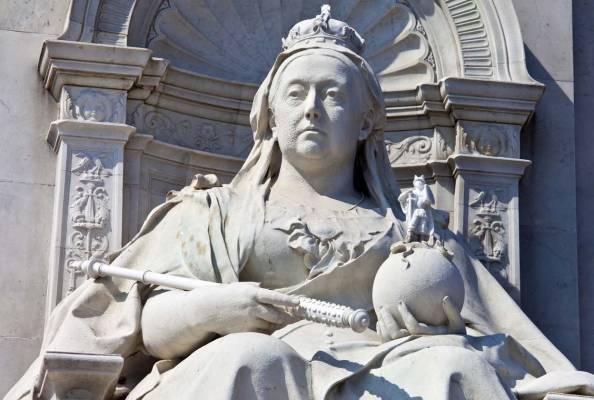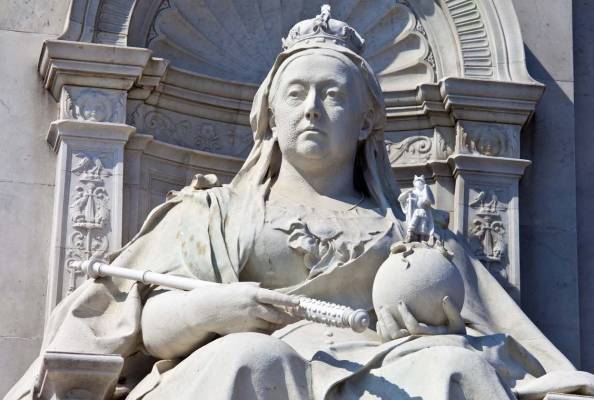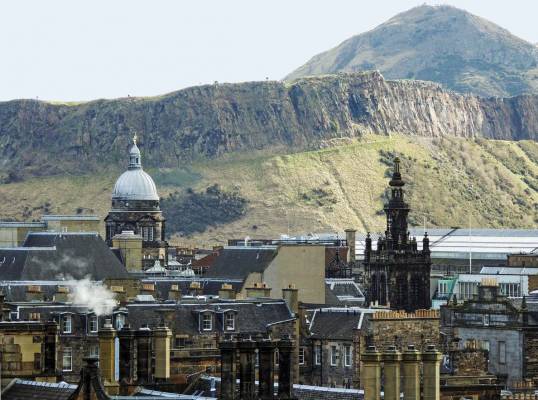
Queen Victoria’s love affair with Scotland


From rumours of romance to the legacy she left behind, here is the whole truth behind Queen’s Victoria’s love for Scotland
Queen Victoria is known for being one of Great Britain’s most iconic and recognisable rulers. Born on 24th May 1819, she took the throne at just 18 and went on to rule for 63 years and 7 months before her death on 22nd January 1901 at age 81. This made her the longest reigning monarch in British history until Queen Elizabeth II took this title on 9th September 2015.
In 1840, aged just 20, Victoria married her first cousin Prince Albert of Saxe-Coburg and Gotha. Their union proved to be a happy and successful one, producing nine children, and their love for each other was famous throughout the country. But Victoria had another famous love in her lifetime: Scotland.
Let’s take a closer look at the mark Victoria left on Scotland, and the mark Scotland left on her.
Victoria’s first love was actually Ireland
The first land to capture the Queen’s heart wasn’t Scotland, but Ireland. Early in her reign, Victoria spent her holidays in. Yet after the potato famine of 1845 irreparable damage was done to the relationship between the British government and the people of Ireland. Despite Victoria’s personal donation of £5,000 to the cause (nearly £600,000 in today’s money) and her visit to the country in 1849, the relationship never recovered. In 1863 and 1864 respectively the Dublin Corporation refused to congratulate Victoria’s son on his marriage and the birth of his son. Because of this snub, Victoria refused to visit Ireland again.
Victoria and Albert’s love for Scotland led to them purchasing Balmoral
Scotland fared much better in Victoria’s eyes. In fact, Victoria made frequent visits north of the border during her reign despite the fact that Scotland had only been visited twice by reigning monarchs in the previous two centuries.
Victoria and Albert’s love for Scotland drove them to take out a long-term lease on the stunning Balmoral Castle in Deeside in 1848. Later, in 1852, the royal couple permanently purchased the property for £31,500 (£4million today) and had it significantly extended.
From this point on, Victoria and Albert spent a section of each summer in Balmoral, thanks to the advances in British rail travel.
Prince Albert left his mark on Arthur’s Seat

Victoria and Albert shared a great affection for Edinburgh. Albert actually loved the city so much that he strived to preserve its beloved landmark Arthur’s Seat.
Albert expressed his concerns upon seeing a bog growing at the base of the hill which houses the iconic rock formation. At the time, the land was polluted with waste from the Old Town, but Albert created a programme to have the bog drained, leading to the creation of Dunsapie Loch and St Margaret’s Loch. He also constructed Queen’s Drive so that Arthur’s Seat could be viewed from a carriage.
Victoria fell in love with tartan
Victoria’s ever growing affection for Scotland didn’t just stretch to the land itself, but to the culture and fashion too. Through their experience of Scotland, Victoria and Albert both became big fans of tartan, and helped to elevate the status and reputation of the pattern south of the border.
According to accounts from the time, Victoria and Albert enthusiastically redecorated Balmoral Castle with reams of “Balmoral tartan, in red and grey” furnishings. They even included “innumerable stags’ antlers” in their décor. For Victoria, the use of tartan was an outward sign of being connected to her favourite part of the world.
After Albert’s death, Victoria found comfort in her Scottish attendant John Brown
The appreciation Victoria held for Scotland is perhaps best known through her relationship with a man named John Brown.
In December 1861, Prince Albert died, and Victoria went into a state of mourning so long and intense that she wore black for the final forty years of her life. Her relief from grief came from the company of a personal servant: John Brown.
Brown was a Scotsman hired to tend to the Queen’s pony at Balmoral, but became her personal servant wherever she was based. The closeness of the pair caused a stir amongst the upper classes, with rumours even surfacing that the two had been secretly married. In fact, the relationship was such a talking point that in 1997 it became the topic of the film Mrs Brown starring Dame Judy Dench and Sir Billy Connolly.
There remains no confirmation as to whether the relationship was romantic, but it’s clear that John Brown meant a great deal to the Queen. For Victoria, John Brown offered her the same thing that Scotland did: escapism, comfort and adventure.
Victoria’s love for Scotland is best conveyed in her own words
By looking at the long history between Queen Victoria and Scotland, it’s clear to see the affection that Victoria held for the country. However, the clearest evidence for Victoria’s admiration comes from her own writings, which were only released to the public in 2012.
Of Scotland, Queen Victoria wrote:
“The romance and the wild loveliness… beloved Scotland the proudest, finest country in the world.”
Victoria loved Scotland, and who can blame her? There are so many wonderful places in the former monarch’s favourite country. And today there’s even more for visitors and residents to enjoy.
The unmissable things to see and do in Edinburgh today
When you think about all there is to see and do in Scotland, it’s no wonder Queen Victoria held it in such high regard. And there’s nowhere in Scotland more full of fun, history and excitement than its capital city Edinburgh. Let’s have a look at some of the unmissable sites the city has to offer.
The Old Town
As the name suggests, the Old Town is the area of Edinburgh that’s full of history. From Edinburgh Castle and the Royal Mile to Greyfriar’s Kirkyard and the underground catacombs, people come from far and wide to discover the wonders and mysteries of old Edinburgh’s cobbled streets.
Galleries and museums
The National Museum of Scotland is Edinburgh’s most popular tourist attraction, bringing in an incredible 1.6 million visitors a year. But it’s just one of many museums in the city, so if you want to learn more about Scotland’s past, Edinburgh is the very best place to do it.
You can also enjoy some culture alongside your history by visiting one of the city’s stunning art galleries. The Scottish National Gallery rakes in almost 1.3 million visitors a year, and features famous artworks from every location and time period.
Royal Yacht Britannia
You can truly live like a monarch on the Royal Yacht Britannia. Located just outside the city in Leith, the yacht offers an insight into how the royals lived when travelling by sea. The lavish parlours, bedrooms, bars and dining halls are a world away from the crowded crew cabins below deck.
Restaurants and bars
You can eat and drink like a king (or queen!) in Edinburgh, with a variety of great bars and restaurants to choose from. Whether you fancy haggis, neeps and tatties or a yankie-style burger, there is something for every taste.
Have you fallen in love with Scotland? Make yourself at home in the Scottish capital with a luxury apartment. Contact Quarterm

